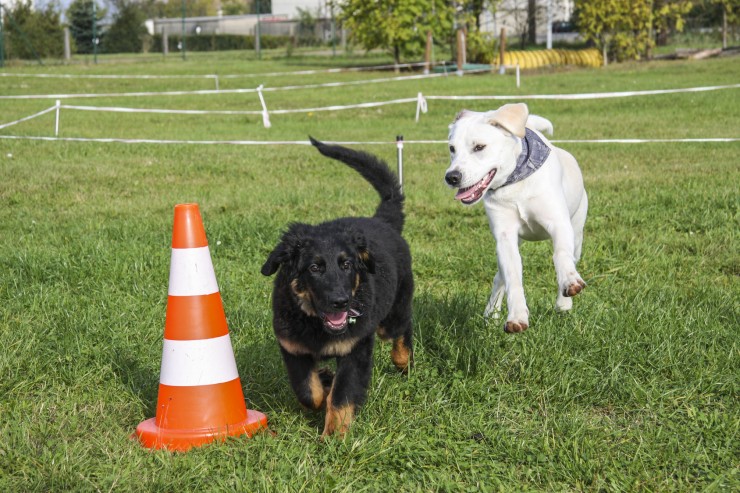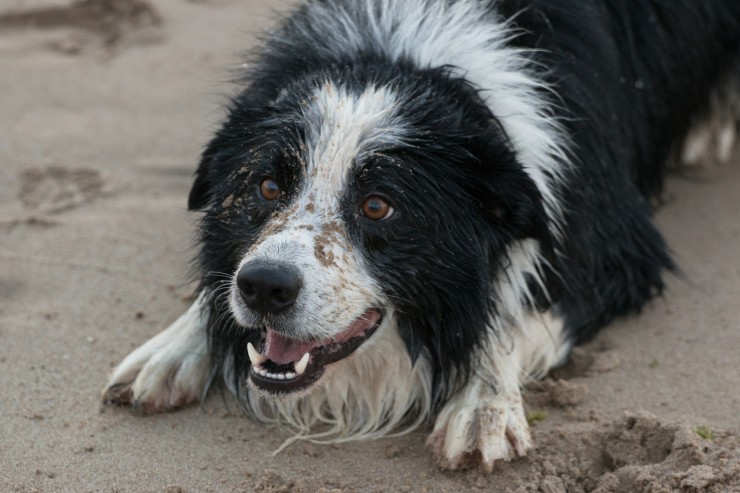
Having a sick animal can be just as nerve-racking for the owner as it is for the pet. The first signs of illness can be frustrating because it isn’t like you can just ask your pet what hurts or how they feel. Even after they have been diagnosed by the vet and put on a medication regiment, administering that medication can be stressful for both the pet and the owner.
It can get even more complicated when you start to consider all the different types of pet medications and all the different ways they can be given. Luckily, there are a few tricks of the trade so that you can get your pets the medicine they need as quickly and painlessly as possible.
Sneaking it in
If your pet is on a medication that can be taken with food then you are in luck. In most cases, sneaking your pet’s medication in with a little treat is the easiest way to get them to take it.
Say, for example, your dog is on a separation anxiety medication like clomipramine. This medication can be administered with food, but not with cheese, which is usually a really easy food to hide a pill in. In the case of clomipramine you might just coat it with some peanut butter and wrap it in a little bit of bread. Most dogs will just think it is a treat and gobble it right up.
Make sure that they don’t just eat the good stuff and spit the pill back out though. Sometimes this may take a few attempts.
Or maybe your cat has bad allergies and has been prescribed an allergy medication like clemastine. Try wrapping this up in a little bit of cheese and feeding it to your cat. You don’t want to use a cheese that is too hard or too soft. It should preferably be something that you can wrap around the pill and make it into a bite size morsel. Since cats are a lot smaller than dogs, the pills usually correspond size-wise. This makes things a lot easier.
Forcing it Down
Sometimes either a medication isn’t supposed to be taken with food, or your pet just keeps spitting it out. They don’t realize that this is medication that they need and unfortunately, you can’t explain it to them.
Let’s say your cat is on an anti-seizure medication like gabapentin, and it just refuses to take it down voluntarily. Start off by calmly approaching your cat. It can sense when you are nervous so just start out by picking it up and petting it calmly like there’s nothing out of the ordinary. It is often a good idea to wrap your cat up in a blanket so that just its little head is sticking out. This way they can’t claw at you or fight you.
Once you have your cat calm and wrapped up, you should get that pill in them as quickly as possible. Hold the pill with your thumb and index finger and use your other hand to gently place your thumb and index finger on the sides of its jaw hinge. Tilt its head back so that the jaw drops, and then quickly push down between the bottom canine teeth. Toss the pill in toward the back of the mouth and close its mouth. You will also want to gently rub or blow on your cat’s nose at this point. Believe it or not, this should stimulate the swallowing impulse.
Dogs are a little different of course. Let’s say you have to administer your dog’s dosage of an antibiotic like amoxicillin. First you are going to want to make sure that your dog’s hindquarters are backed up against a wall. That way they can’t try to squirm away from you.
Again, hold the pill between one thumb and index finger and use your other hand to grab around the top of their snout behind their upper canines. Tilt your dog’s head back and push down between the lower canines with a finger. Get the pill in there and then hold your pet’s mouth closed. Again, you can use the trick where you rub or blow on your dog’s nose to induce swallowing.
The most important thing to remember about administering medication to your pet is not how you do it, but what you do afterwards. Whether your pet immediately gobbles up their medication with a little slice of liverwurst or whether it takes twenty minutes of repeated attempts, it is imperative that you remember to reward them afterward.
Positive reinforcement is the most important way to get your pet to continue to take their medicine in the future. After they have taken their medication you should hug them, tell them what a good job they did, and even give them another treat. Give your pet as much love and affection as you can after they take their medication and they will eventually start to associate med time with happy things.
However you get your pet your medication, just remember that it is important to keep them on the prescribed schedule. You will both be happier and your pet will be healthier in the long run.
 10 Quieter Dog Breeds For People Who Like A Laid-back Lifestyle
10 Quieter Dog Br
10 Quieter Dog Breeds For People Who Like A Laid-back Lifestyle
10 Quieter Dog Br
 Canine Rally - The Newest Uk Dog Sport!
Canine Rally - Th
Canine Rally - The Newest Uk Dog Sport!
Canine Rally - Th
 Tips For Choosing And Buying A Healthy Pet Tarantula
Tips For Choosing
Tips For Choosing And Buying A Healthy Pet Tarantula
Tips For Choosing
 Training a dog to be obedient
Training a dog to be obedient
Dogs are usual
Training a dog to be obedient
Training a dog to be obedient
Dogs are usual
 Five Breeds Of Dog That Will Keep You On Your Toes!
Five Breeds Of Do
Five Breeds Of Dog That Will Keep You On Your Toes!
Five Breeds Of Do
Copyright © 2005-2016 Pet Information All Rights Reserved
Contact us: www162date@outlook.com